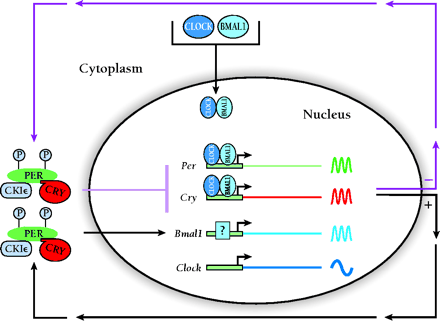
- Institution: Stanford Univ Med Ctr Lane Med Lib/Periodical Dept/Rm L109
- Sign In as Member / Individual
Circadian Photoreception in Humans and Mice

Molecular model of mammalian circadian clock. The clock is made up of positive and negative transcriptional regulators. The CLOCK–BMAL1 heterodimer activates transcription of the Per and Cry1 genes. The PER proteins interact, at their C-terminal domains, with the CRY proteins; central sequences of the PER proteins interact CKIε , and the resulting ternary complexes translocate into the nucleus, where they negatively regulate the transcription of Per and Cry genes (indicated by “oscillating” transcript). The PER and CRY proteins also positively regulate transcription of Bmal1 (62). A recent study suggests that all clock genes form a “supercomplex,” or “timesome,” on the Per promoter, with the PER proteins acting as a scaffold for assembly (63) . Adapted from (3) .


